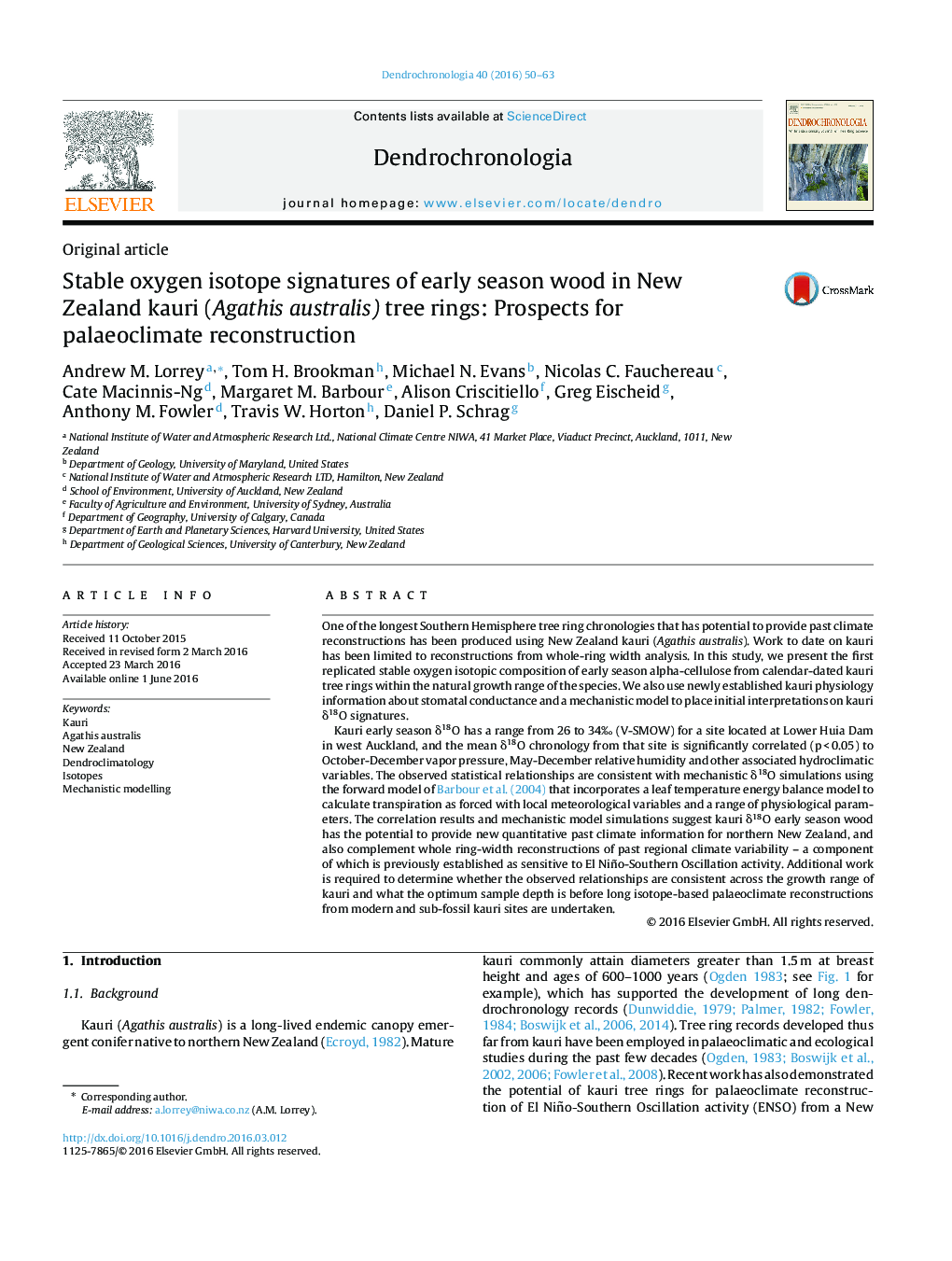| کد مقاله | کد نشریه | سال انتشار | مقاله انگلیسی | نسخه تمام متن |
|---|---|---|---|---|
| 85538 | 159094 | 2016 | 14 صفحه PDF | دانلود رایگان |
One of the longest Southern Hemisphere tree ring chronologies that has potential to provide past climate reconstructions has been produced using New Zealand kauri (Agathis australis). Work to date on kauri has been limited to reconstructions from whole-ring width analysis. In this study, we present the first replicated stable oxygen isotopic composition of early season alpha-cellulose from calendar-dated kauri tree rings within the natural growth range of the species. We also use newly established kauri physiology information about stomatal conductance and a mechanistic model to place initial interpretations on kauri δ18O signatures.Kauri early season δ18O has a range from 26 to 34‰ (V-SMOW) for a site located at Lower Huia Dam in west Auckland, and the mean δ18O chronology from that site is significantly correlated (p < 0.05) to October-December vapor pressure, May-December relative humidity and other associated hydroclimatic variables. The observed statistical relationships are consistent with mechanistic δ18O simulations using the forward model of Barbour et al. (2004) that incorporates a leaf temperature energy balance model to calculate transpiration as forced with local meteorological variables and a range of physiological parameters. The correlation results and mechanistic model simulations suggest kauri δ18O early season wood has the potential to provide new quantitative past climate information for northern New Zealand, and also complement whole ring-width reconstructions of past regional climate variability – a component of which is previously established as sensitive to El Niño-Southern Oscillation activity. Additional work is required to determine whether the observed relationships are consistent across the growth range of kauri and what the optimum sample depth is before long isotope-based palaeoclimate reconstructions from modern and sub-fossil kauri sites are undertaken.
Journal: Dendrochronologia - Volume 40, December 2016, Pages 50–63
